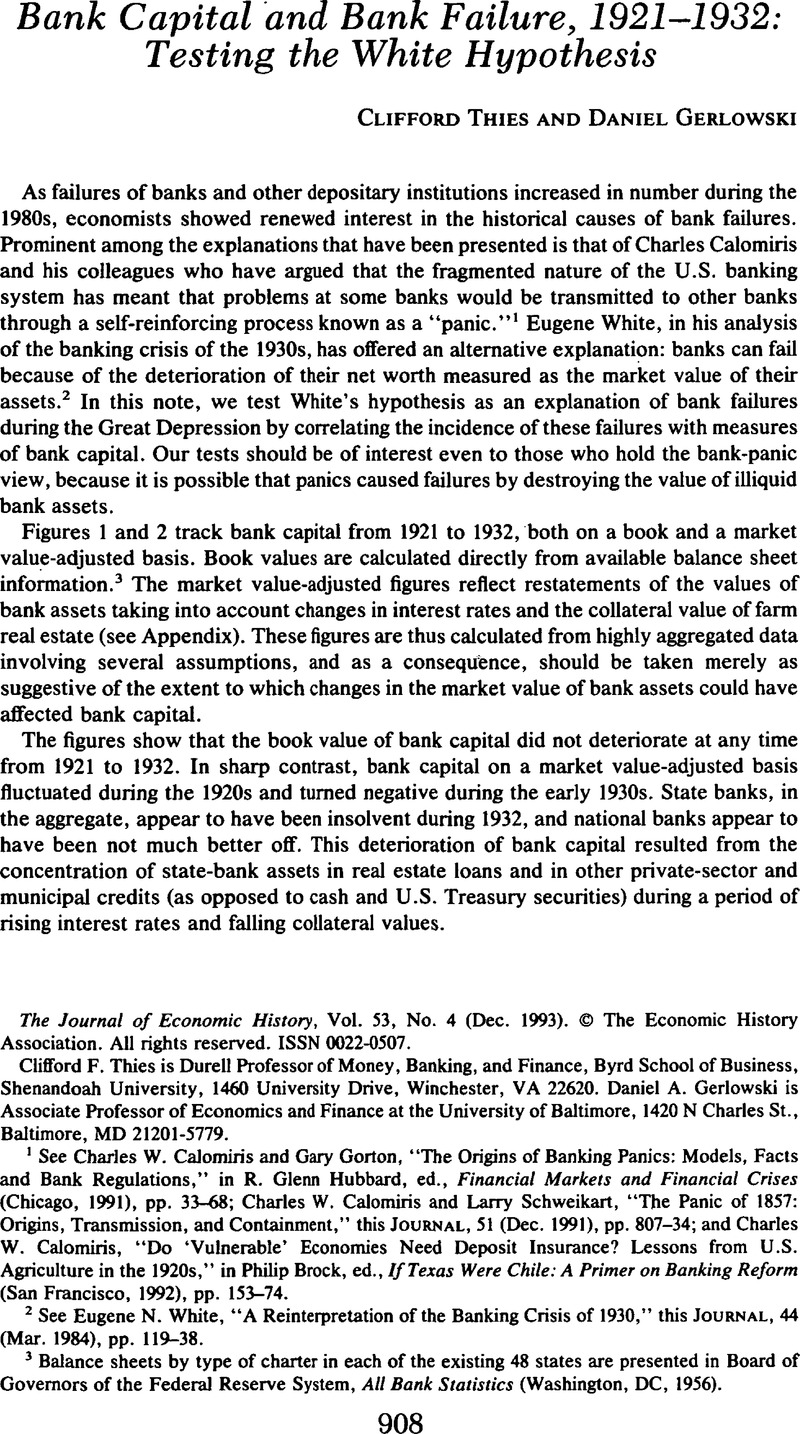Published online by Cambridge University Press: 03 March 2009

1 See Calomiris, Charles W. and Gorton, Gary, “The Origins of Banking Panics: Models, Facts and Bank Regulations,” in Hubbard, R. Glenn, ed., Financial Markets and Financial Crises (Chicago, 1991), pp. 33–68Google Scholar; Calomiris, Charles W. and Schweikart, Larry, “The Panic of 1857: Origins, Transmission, and Containment,” this Journal, 51 (12 1991), pp. 807–34Google Scholar; and Calomiris, Charles W., “Do ‘Vulnerable’ Economies Need Deposit Insurance? Lessons from U.S. Agriculture in the 1920s,” in Brock, Philip, ed., If Texas Were Chile: A Primer on Banking Reform (San Francisco, 1992), pp. 153–74.Google Scholar
2 See White, Eugene N., “A Reinterpretation of the Banking Crisis of 1930,” this Journal, 44 (03 1984), pp. 119–38.Google Scholar
3 Balance sheets by type of charter in each of the existing 48 states are presented in Board of Governors of the Federal Reserve System, All Bank Statistics (Washington, DC, 1956).Google Scholar
4 A similar analysis appears in Thies, Clifford F. and Gerlowski, Daniel A., “Deposit Insurance: A History of Failure,” Cato Journal, 8 (Winter 1989), pp. 677–93Google Scholar; and Alston, Lee J., Grove, Wayne A., and Wheelock, David C., “Why do Banks Fail? Evidence from the 1920s,” Explorations in Economic History (1993, forthcoming).Google Scholar
5 Balance sheet items, number of banks, and bank failure data are taken from Board of Governors, All Bank Statistics.
6 White, “Reinterpretation,” pp. 119–38, identifies a structural shift in the banking system in this same period.
7 The number of foreclosures per 1,000 farms, reported by the U.S. Department of Agriculture, is adjusted to reflect the percentage of farms that were mortgaged and owner-operated. U.S. Department of Agriculture, The Farm Real Estate Situation (Washington, DC, various issues).Google Scholar The authors are grateful to an anonymous referee for suggesting this technique and these data.
8 See Alston, Lee J., “Farm Foreclosures in the United States During the Interwar Period,” this Journal, 43 (12 1983), pp. 885–903.Google Scholar
9 Indexes of farm real estate value are taken from various issues of The Farm Real Estate Situation.
10 The underlying statistics for these calculations are available in Leven, Maurice, Income in the Various States, 1919–1921 (New York, 1925)Google Scholar; and Slaughter, John A., Income Received in the Various States, 1929–1935 (New York, 1937).Google Scholar